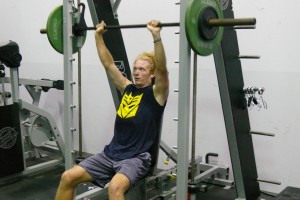
Haylee Hunt
Guest writer and
Jessica Wright
Editor-in-chief
According to the NCAA rules and regulations, it is required of all universities to have separate workout areas provided for both students and athletes. Having a nice place to go and relieve stress while being proactive with their bodies’ health is important for athletes; however, it is also important for non-athletes to have the same access to workout areas. Shorter is making great strides in providing students with the opportunities on campus for participation in physical activity of their own.
During the spring of last year, Corey Humphries, vice president of student affairs, was aware of the issue of not having enough choices for where students could work out and said the problem was “in the works of being resolved.” Since then, Humphries has actively pursued better options for students to have the chances to be active.
“We’re now giving more opportunities for students to be active and fellowship through physical activities,” said Humphries.
Some of these new opportunities include the sand volleyball court near the new girls dorm, the running trail on campus, the addition of the Darlington, or Thornwood, Campus and the continued fitness classes.
Before Shorter’s acquisition of the Thornwood Campus, space was limited, which created a lack of extra athletic facilities, especially for non-athletes. Now that Shorter has the use of Thornwood’s indoor and outdoor gyms, the outside field as well as the building itself, Humphries is excited for the new options “for students to be engaged physically.” These options include activities such as the health and fitness classes of Zumba, Insanity and Pilates as well as furthering the participation and opportunities with intramural sports on the outdoor field. Humphries said the administration “can’t make it happen all in one day,” but their goal is to progress to achieve the students’ needs.
“Our job is to create opportunities for students to be more active and to fellowship in that way. Folks who are not plugged into a varsity sport can now have options,” said Humphries. “Students can take it or leave it, but we don’t want them to say they never had it.”
In the past, the university has held a gym membership with two local gyms – Club Fitness and The Rome Athletic Club (RAC). Both allowed Shorter students to have a free gym membership when they presented their school ID at the door, but those memberships have since ended.
Sophomore pre-med major Mallory Waller was one of these students who used to frequent the RAC, but now Waller is taking advantage of the new athletic options, namely the running trail. Waller said that though using the RAC was convenient, she believes the running trail is a good and peaceful place for students to use.
“It’s a wonderful new addition to the campus,” said Waller. “The trail is a great place to go for a hike and enjoy nature, and I’m looking forward to using it again.”
The NCAA DII transitioning board visited campus back in April of 2013 to evaluate the progress Shorter is making to meet the specific regulations that the transition to DII calls to make. Dr. Richard Cowan, director of compliance, is confident that the university is making great strides in its transition to NCAA DII, including the efforts to fulfill the regulations for opportunities and facilities for non-athletes.
“Shorter has a long way to go before everything is perfect, but I assure you it will be great when the transition is complete,” said Cowan.

